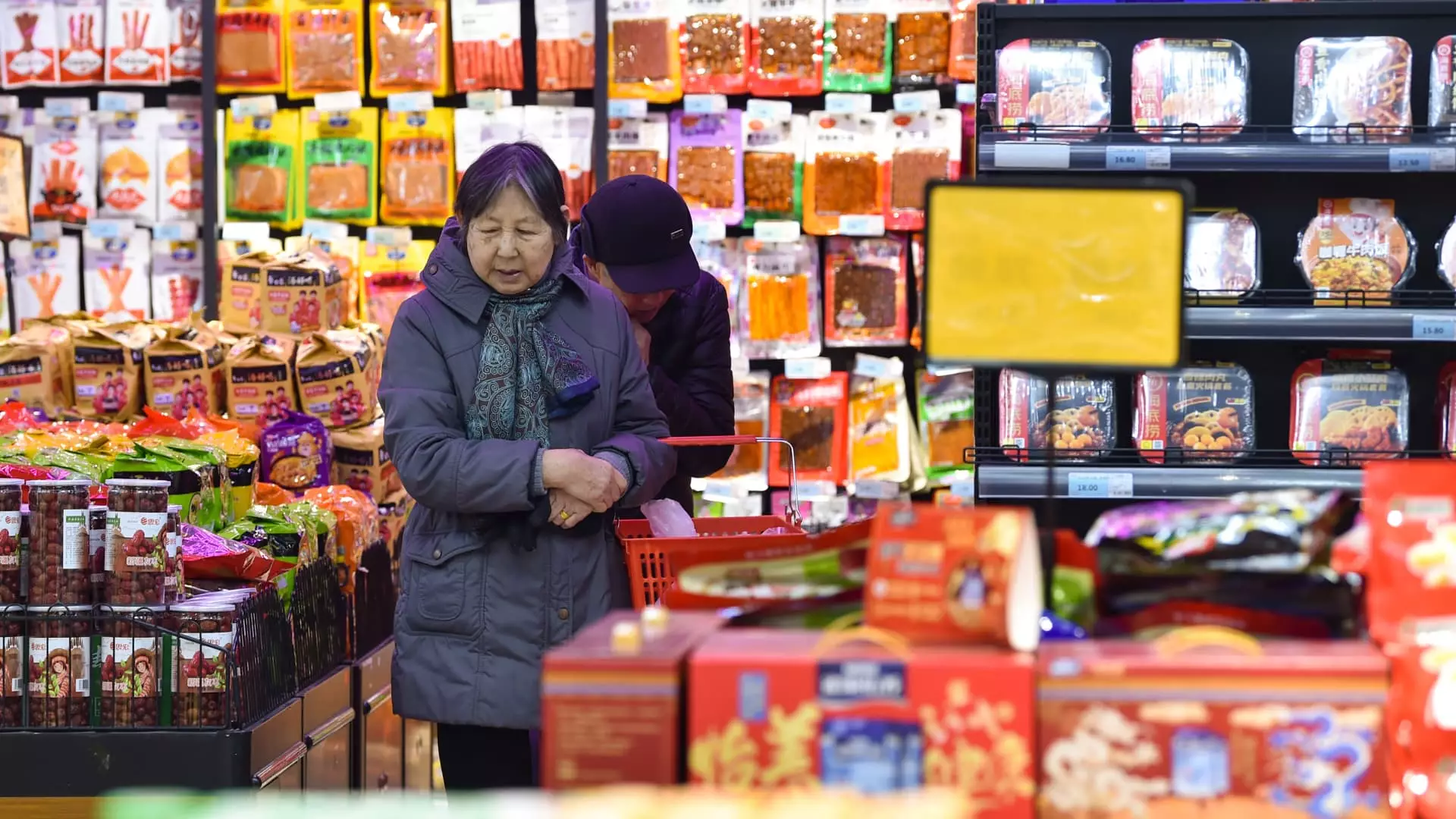As China steps into 2025, the economic landscape appears to be painted with contrasting shades of inflation and deflation. The latest figures reveal that consumer inflation quickened substantially in January, marking an increase of 0.5% compared to the previous year. While this acceleration is promising, it must be understood against the backdrop of persistent deflation within producer prices. This divergence presents a complex picture of the Chinese economy, where consumer sentiment lingers in a state of uncertainty, leading many analysts to predict ongoing deflationary pressures unless domestic demand receives a much-needed boost.
A critical factor weighing heavily on China’s economy is the lingering effects of tariffs imposed by the United States under former President Donald Trump. These measures have added significant pressure on Chinese goods, fundamentally altering the trade landscape. Consequently, Beijing faces a formidable challenge in rekindling domestic demand that is crucial for sustainable economic growth in the world’s second-largest economy. Analysts caution that without strategic interventions to stimulate consumer spending, economic conditions may remain stagnant or worsen in 2025.
Recent statistics released by the National Bureau of Statistics indicate an interesting contradiction in consumer behavior. The Consumer Price Index, which reflects the purchasing trends of consumers, has risen more rapidly from the previous month, yet the underlying momentum remains fragile. For January, while a 0.5% year-on-year increase appears optimistic compared to December’s 0.1%, it is essential to note that per capita spending during the festive season grew by a mere 1.2%. This is in sharp contrast to previous years, where spending surged by over 9%. Such shifts indicate consumer caution largely driven by fear of job security and stagnant wages, which can stifle economic growth if left unaddressed.
Core inflation—a metric that strips out the more volatile food and energy sectors—also indicates a troubling trend. Moving up to 0.6% in January from 0.4% in December, this slight increase signals potential resilience in selective consumer sectors but showcases the broader struggle characterized by reduced discretionary spending. While the expectation of gradual price increases can be seen as a positive sign, the overarching threat of sustained producer price deflation risks overshadowing this optimism.
Another layer contributing to the inflationary narrative is the anticipation surrounding the Lunar New Year, the most celebrated holiday in China. Typically, prior to this event, price increases emerge as households stockpile goods. In January of this year, for instance, airfare rose by 8.9%, reflecting traditional consumer behavior. However, the mixed results in spending during this festive period highlight the underlying anxieties facing consumers. Even while some sectors, such as tourism and entertainment, showed growth, the broader picture remains one of caution, emphasizing the fragile state of recovery in the economic landscape.
Despite the incremental rise in consumer inflation, the Producer Price Index continues to portray a disheartening narrative of deflation. With prices falling 2.3% year-on-year for the second consecutive month, businesses remain under significant pressure due to overcapacity in various industries combined with stagnant global demand. The implications of these deflationary trends are profound, indicating that firm profitability and operational sustainability are at risk, further complicating the broader economic landscape.
Looking ahead, economic policymakers in China are confronted with mounting challenges. With expectations for a sustained growth rate hovering around 5% this year, coupled with external pressures from tariffs, there remains a sense of urgency for intervention. However, the upcoming annual parliament session in March is likely to hold off on any fiscal or monetary policy adjustments until more concrete evaluations can be made. As Zhiwei Zhang, an economic expert, articulates, the priority may lean more toward external uncertainties rather than internal economic woes—underscoring a complicated balancing act between fostering growth while mitigating risk.
China’s economic forecast for 2025 reflects both resilience and vulnerability. The ongoing interplay between consumer inflation and producer deflation, compounded by external pressures, presents a multifaceted challenge that will require astute policymaking to navigate effectively.


Leave a Reply